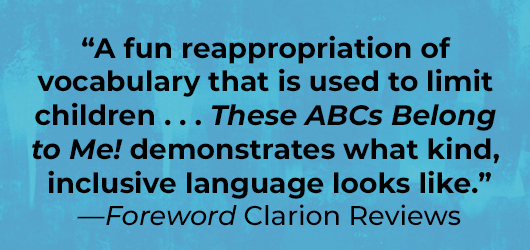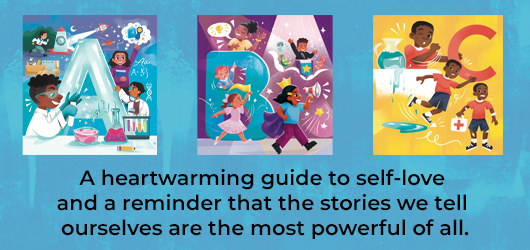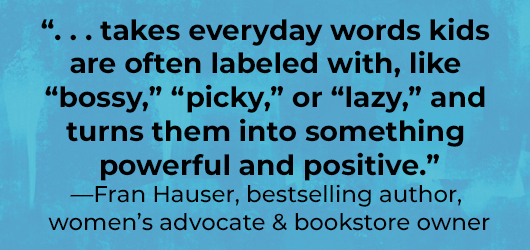Redefining the Alphabet with These ABCs Belong to Me! by Alicia McKenzie
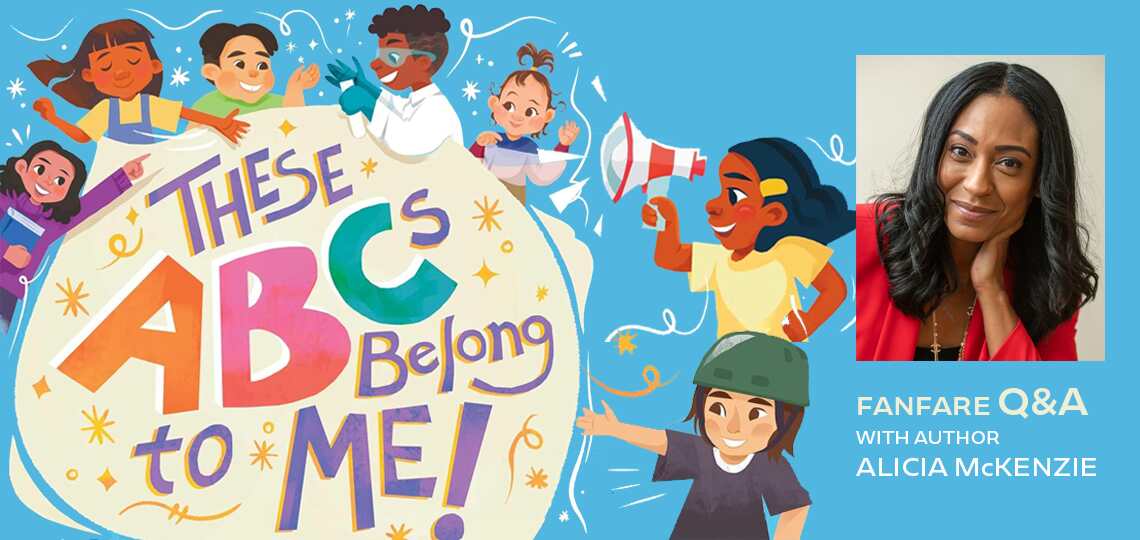
Reviewer Willem Marx Interviews Alicia McKenzie, Author of These ABCs Belong to Me!
Unkind words may not break bones but no one has escaped the pain they inflict. And that’s not even considering the countless other phrases and expressions in common use that may not have ill intent behind them, but still do damage. In These ABCs Belong to Me!, Alicia McKenzie decided to call out some of those words and phrases in an empowering new picture book for children—and adults.
What’s more, Alicia gives her young readers the tools to defuse awkward situations and disarm the harmful words. In today’s interview, she says, “By reframing them, giving them new meaning and new life, we take away their sting and give kids agency over how they interpret them. It’s about building strength and resilience, not avoidance.
Willem Marx found These ABCs to be a “joyous reclamation of common terms” in his glowing Foreword Clarion review and jumped at the chance to connect with Alicia. She was gracious enough to accept.
These ABCs Belong to Me! makes a conscious effort to reclaim words with negative connotations—I’m thinking of “know-it-all,” “hyperactive,” “ugly.” What gave you the idea to do this, and why do you think it’s necessary?
This concept stems largely from the idea that I can’t protect my children from every harsh or careless word they’ll hear, but I can equip them with tools to navigate these situations. This world has become so interconnected, unbridled speech is plentiful and children absorb more than we realize. I wanted to reimagine and reframe words such as “know-it-all” or “hyperactive,” not only for my kids but for the adults as well.
On a broad level, do you think picture books, children’s literature, and ABCs can instill values in children? What was your relationship to books as a child?
Absolutely. Children’s books are often the first introduction to language, storytelling, and culture. They create the foundation of how a child sees themselves and the world around them. While I didn’t grow up immersed in books the way my kids do now, I have become an avid reader in adulthood and experience how books can act as companions, mirrors, and doorways.
There’s a tremendous energy and joy in the book’s illustrations that feels attuned to the rhyming stanzas you write for each letter. How did you work with Sarah Demonteverde, the book’s illustrator? What was the collaborative process like, and what would you like children to take away from the imagery?
Sarah brought the words to life in a way that exceeded my imagination and expectations. The collaborative process started from the beginning when I provided pictures of each of my children. She took those images and created the illustrations, plus more, that you see in the book. I have mixed race children, and it was very important that their differences were represented in the pages. I also wanted each image to feel like a celebration, an acknowledgement that their traits are seen and appreciated.
For me, the short descriptions that accompany each letter feel like poems. Beyond the rhyming, there’s imagery, there’s story, there’s drama. I’m thinking of “F is for Fussy” right now. Do you think of these texts as poems? And what did you draw on to write them? What was that process like?
Such an interesting thought but I don’t think of each letter as its own poem. Music plays a large role in our household, and the flow of the words was almost like songwriting. Each sentence had to find the beat and roll of the tongue just so. It’s a delicate balance that was more difficult than I expected.
At the end of the book, you include a lovely note about the way your experience as a parent informed These ABCs Belong to Me! In some ways, you describe learning from your children—would it be correct to say they taught you the ideas in this book? How do you think of that specific learning relationship between parents and children?
Without question. My parenting journey has been one of constant evolution and learning. Over the years, I have also made the realization that none of us has it figured out. We’re all just doing our best. My kids remind me daily to approach the world with curiosity and openness. They see possibilities where adults often see limits. That dynamic, parents learning alongside their children, is the heart of this book. If we can meet each other in that space, it changes everything.
There’s a heavy quality to many of these words—as you write, a lot of them are used to “limit or define” children at young ages. Why not simply abandon the words, find a new, less baggage-laden vocabulary?
As much as I would love for these words to disappear, that’s not the world we live in. They will hear them, sometimes from peers, sometimes from adults who love them but don’t realize the impact of their language. My goal wasn’t to erase those words but to disarm them. By reframing them, giving them new meaning and new life, we take away their sting and give kids agency over how they interpret them. It’s about building strength and resilience, not avoidance.
I have the impression that many people without children don’t appreciate the artistry and creative process that goes into writing a picture book. Yet, in the scheme of things, these are some of the most important books we have—they feed the most receptive and innocent members of our society. What was the process of bringing this picture book from the ideas stage into reality? Do you have other projects and book ideas coming up?
Bringing this book to life was both incredibly rewarding and incredibly challenging. The team at The Collective Book Studio was integral in this process. It involved a lot of redlines and iterations of the images and how the colors popped off the page, but I am so proud of the end-product. The seed for this book was planted in 2022, and it took three years to bring it to life.
And you’re so right—picture books are small in size but large in impact, which is why they’re so special to me. As for what’s next, I am already working on a series of children’s books that build on the social and emotional growth of small humans. The ideas are ruminating in my head, but I truly believe that These ABC’s Belong to Me! is just the beginning.
These ABCs Belong to Me!
Alicia McKenzie
Sarah Demonteverde (Illustrator)
The Collective Book Studio (Sep 30, 2025)
Clarion Rating: 4 out of 5
Energetic and jazzy, the picture book These ABCs Belong to Me! subverts negativity with its curious, joyous reclamation of common terms.
Alicia McKenzie’s diverse picture book These ABCs Belong to Me! brings a new, joyous vocabulary into the educational ABC format.
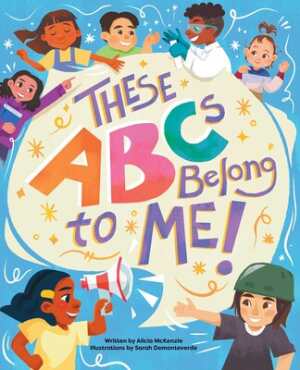
Colors explode off the page in this ABCs picture book that pairs the letters of the alphabet with words and phrases like “clumsy,” “know-it-all,” and “zany.” These often negative words are accompanied by five-line, rhyming poems that both expand their definitions and reclaim them to instill new connotations. “Nosy” becomes a way of exploring curiosity in children, while “hyperactive” celebrates a child’s joy at movement. These maverick understandings are set off by illustrations of children engaging in activities that dovetail with the descriptions: A girl raises her hand in class against a background of mathematical formulas, a wolf howling in a thought bubble, and the letter under discussion, K.
There is an energetic, jazzy layout to the digital images on the page. The combination of bright colors and geometric lines and shapes generates an absorbing sense of movement and play. The happiness that is shown on the faces of children from all backgrounds is also incorporated into the colorful, active imagery and casts an uplifting mood over the entire book. Depicting children of different ethnicities, cultures, shapes, sizes, personalities, and passions (some play dress-up, others hide from lighting and thunder, eat with their families, or climb trees) also makes inclusion and community a cornerstone value of the book.
The engaging, rhyming descriptions of each word and phrase speak to the underlying emotions and tensions in each idea. “Worry wart,” for example, gives rise to a brief story of embracing feelings of anxiety and understanding that they are helpful and reasonable when concerning issues of safety. However, the complexity of the texts themselves and their small size and placement on the page make this a book tailored to more experienced readers. In addition, words like “e(X)tra,” which is corresponded to the letter X, do not always match the thematic and educational aims of the book.
A fun reappropriation of vocabulary that is used to limit children, the rhyming picture book These ABCs Belong to Me! demonstrates what kind, inclusive language looks like.
Reviewed by Willem Marx
September 11, 2025
Willem Marx

